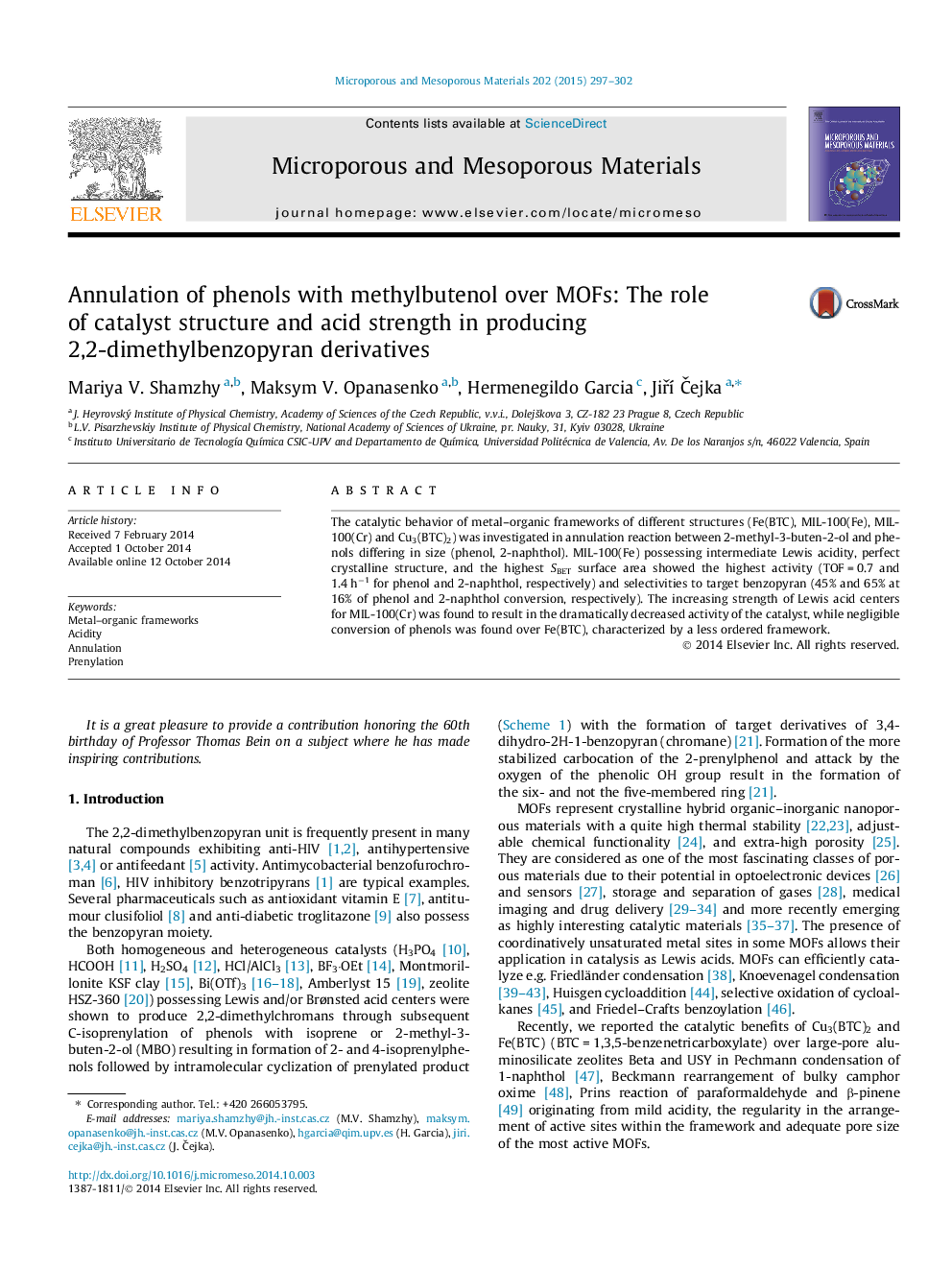| Article ID | Journal | Published Year | Pages | File Type |
|---|---|---|---|---|
| 72921 | Microporous and Mesoporous Materials | 2015 | 6 Pages |
•The catalytic performance of MOFs differing in structure was compared in annulation reaction of phenols with methylbutenol.•Both nature of metal cation and structure of MOFs were found to determine their catalytic behavior.•Intermediate Lewis acidity and perfect crystallinity make MIL-100(Fe) an efficient heterogeneous catalyst of annulation.
The catalytic behavior of metal–organic frameworks of different structures (Fe(BTC), MIL-100(Fe), MIL-100(Cr) and Cu3(BTC)2) was investigated in annulation reaction between 2-methyl-3-buten-2-ol and phenols differing in size (phenol, 2-naphthol). MIL-100(Fe) possessing intermediate Lewis acidity, perfect crystalline structure, and the highest SBET surface area showed the highest activity (TOF = 0.7 and 1.4 h−1 for phenol and 2-naphthol, respectively) and selectivities to target benzopyran (45% and 65% at 16% of phenol and 2-naphthol conversion, respectively). The increasing strength of Lewis acid centers for MIL-100(Cr) was found to result in the dramatically decreased activity of the catalyst, while negligible conversion of phenols was found over Fe(BTC), characterized by a less ordered framework.
Graphical abstractFigure optionsDownload full-size imageDownload as PowerPoint slide
